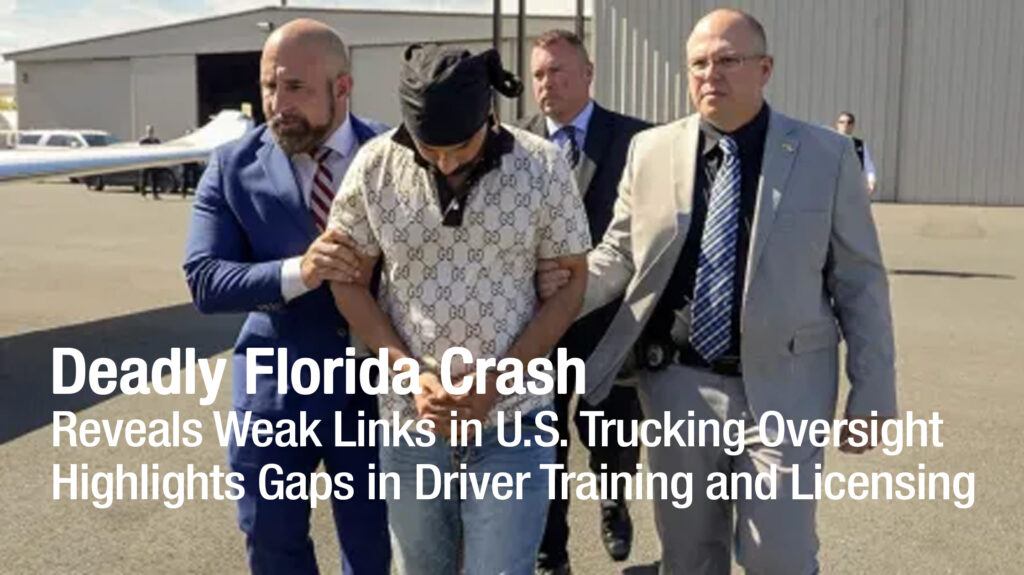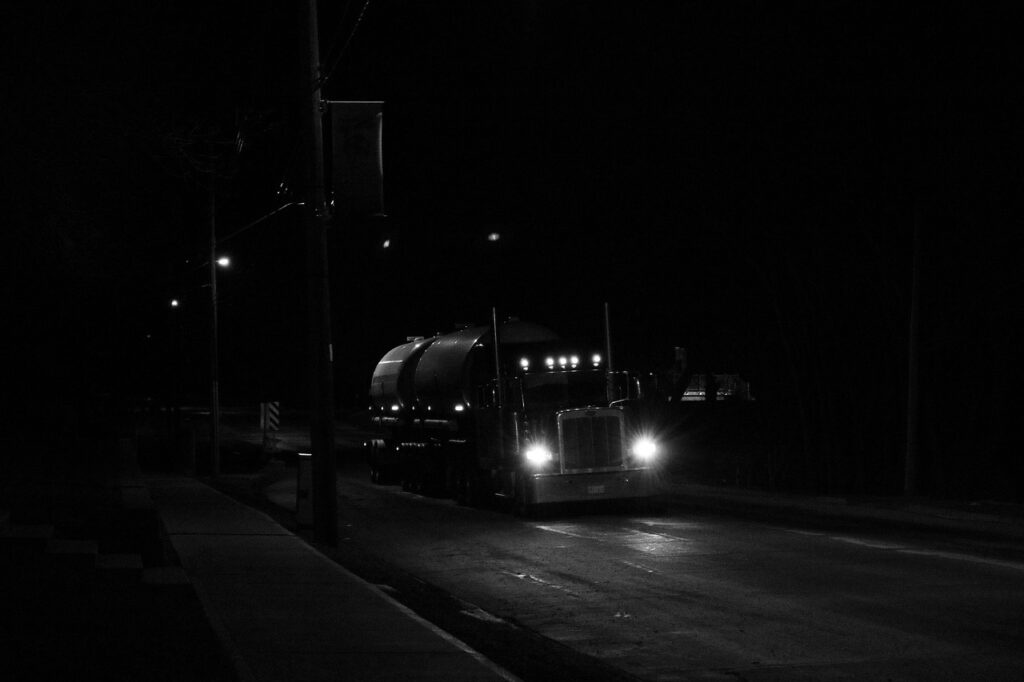On August 12, 2025, tragedy struck the Florida Turnpike near Fort Pierce when truck driver Harjinder Singh, 28, attempted an illegal U-turn in a restricted “official use only” turnaround. His tractor-trailer blocked all lanes of traffic. A minivan carrying three Florida residents collided with the trailer, killing everyone inside.
Singh, who entered the U.S. illegally in 2018, fled to California after the accident but was later extradited to Florida. He now faces three counts of vehicular homicide and manslaughter, carrying a potential 45-year prison sentence. Bond was denied due to his immigration status and risk of flight.
While Singh’s reckless maneuver was the proximate cause of the crash, experts argue that he represents something larger: the final nail in the coffin of a trucking system that consistently puts profit before safety.
The Human Cost
The victims included:
- A 52-year-old mother
- Her 17-year-old daughter
- The daughter’s boyfriend
All were killed instantly. Their loss has fueled both grief and anger across Florida, sparking petitions that reflect a divided public. One petition, with over 2.5 million signatures, urged leniency, framing the accident as a tragic mistake. Counter-petitions demanded the maximum penalty, arguing that three innocent lives demand full accountability.
A Broken Chain of Oversight
1. Entry-Level Driver Training (ELDT) — Bare Minimum Standards
Singh may or may not have completed FMCSA’s Entry-Level Driver Training (ELDT), but the program—effective since 2022—does not require minimum behind-the-wheel hours. A driver can legally obtain a CDL with minimal supervised practice, leaving them dangerously underprepared for complex highway maneuvers.
“ELDT set the floor, but the floor is too low.”
2. CDL Licensing — States Lowering the Bar
Singh was issued a CDL by the California DMV, despite failing most road sign recognition questions and demonstrating limited English proficiency. Bodycam footage from a New Mexico traffic stop showed him struggling to communicate with police.
The federal government has since threatened to withhold more than $50 million in safety funds from California, Washington, and other states accused of ignoring CDL English-language enforcement.
3. Broker Negligence — Cost Over Safety
Singh was contracted through a freight broker that failed to ensure his motor carrier or himself as a driver met basic safety standards, such as FMCSA ratings, and violation history.
Legal experts note that brokers can be held liable for negligent motor carrier selection when they ignore red flags in pursuit of cheaper hauls.
4. Profit Pressures — Unsafe Industry Culture
The trucking industry’s structure incentivizes unsafe practices:
- Per-mile pay encourages drivers to speed and stretch hours.
- Coercion by shippers/brokers pushes drivers to break hours-of-service rules.
- Maintenance and overloading shortcuts boost profits but compromise road safety.
FMCSA rules prohibit coercion and unsafe operations, but enforcement gaps mean violations are rarely punished.
Policy & Reform Roadmap
To prevent tragedies like this, experts call for a shift from profit-driven compliance to safety-driven regulation.
- Strengthen ELDT Standards
- Mandate 50–100 supervised driving hours before CDL issuance.
- Expand curriculum to cover high-risk scenarios (e.g., turnarounds, emergency braking).
- Uniform CDL Enforcement
- Enforce consistent English comprehension and road-sign literacy testing across states.
- Tie CDL audit results to federal funding compliance.
- Mandatory Broker Vetting
- Require brokers to check FMCSA Safety Measurement System (SMS) data, insurance, and safety history before contracting.
- Establish penalties for negligent motor carrier selection.
- Combat Coercion & Unsafe Practices
- Strengthen FMCSA anti-coercion enforcement.
- Expand whistleblower protections for drivers reporting unsafe demands.
- Tie Federal Funding to Safety Outcomes
- Allocate DOT and FMCSA grants based on demonstrated safety performance, not just paperwork compliance.
Closing Argument
Harjinder Singh’s illegal U-turn was reckless, but he was not the true root cause. He was simply the last link in a chain of preventable failures—weak training, lax licensing, and negligent broker oversight.
Until the U.S. trucking system prioritizes safety over profit, families will continue to pay the ultimate price.
“The driver is the last nail in the coffin—but the system builds the coffin.”
Call to Action
👉 Join the Truck Owners and Drivers Association in advocating for stronger FMCSA standards, broker accountability, and safety-first trucking reforms.
Learn More & Get Involved → JoinTODA.com
#FloridaTruckAccident #FMCSA #DriverTraining #CDLReform #BrokerLiability #RoadSafetyUSA #TruckingReform #PreventTruckAccidents #TransportationSafety


